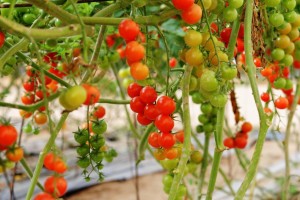Identify Your Plants Easily With Sturdy Garden Markers
 Have you ever planted your early spring lettuce or spinach only to have your spouse stomp over the tiny new growth on their way to plant their cucumbers or green beans? Better yet, have they ever yanked your new vegetables thinking they were weeds? Garden markers can identify your plants and help protect your part of the garden. They help you remember where you planted and identify that area for any others who wander through your garden.
Have you ever planted your early spring lettuce or spinach only to have your spouse stomp over the tiny new growth on their way to plant their cucumbers or green beans? Better yet, have they ever yanked your new vegetables thinking they were weeds? Garden markers can identify your plants and help protect your part of the garden. They help you remember where you planted and identify that area for any others who wander through your garden.
Some of us garden for beauty and others for usability. Some garden because we just enjoy it and others garden out of necessity when erosion threatens a bare slope. Some of us can remember parents or grandparents or an aunt or uncle who always had a little garden in their backyard. Some people carry on this family tradition with those tomatoes or cucumbers or other lovely edibles. Edible gardens are certainly coming back or remaining strong these days as people try to save some money, eat healthier and use their time wisely in the yard. Finding the right way to identify your plants is very important to those who enjoy planting multiple plants throughout the growing season.
Time seems filled with so many things these days that some gardeners are going from grass to green beans (or whatever produce they like best). Tired of wasted time mowing, fertilizing and watering a lawn, some people are opting to convert their lawns to edible landscapes of berry bushes, fruit trees, vegetables and herbs. Time they spent watering, weeding and planting now seems very well-spent when they harvest their healthy produce. By reducing the distance from farm-to-table, they enjoy produce packed with higher quantities of vitamins and minerals.
Going “edible” doesn’t mean foregoing beauty in your yard. Multiple resources can offer ideas on the perfect edible and non-edible plant pairings so that your garden is still pretty while it has a purpose. Mother Earth News offers some ideas for interspersing flowering perennials with the vegetables in your yard and pairing some of these plants:
- To add some color to a climbing vegetable, pair orange or red cherry tomatoes with a vine like purple or blue morning glories or cucumbers with coral gladiolus on a trellis or an arbor
- Dwarf nasturtiums can dress up the lacy edges of the fern-like tops of carrots
- Red runner beans with a backdrop of red and white striped zinnias
- Bright orange tulips planted with mesclun at their feet and softly edged with a little height by parsley.
Perhaps you might like to go from grass to green beans (or whatever produce you like best). Throughout the growing season, vegetables will be harvested and gone, sometimes leaving an empty bare space. Sometimes non-edible plants can fill in, but plant markers can identify your plants and assure that your edibles can stay safe. At Kincaid Plant Markers we’d be happy to help protect your produce from your spouse’s big feet or weed-picking fingers with our variety of garden markers.

Garden Markers in the Edible Landscape | Kincaid Plant Markers
[…] smart, nutritious and have the bumper bonus of being environmentally friendly. Add some beautiful garden markers and these areas become wonderful points of interest and […]